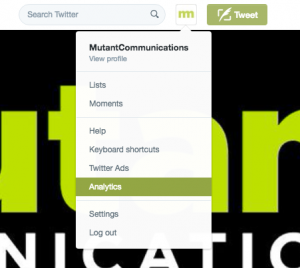Any good communications professional – whether they appreciate the fast-paced agency life or prefer to strategise in-house – will at some point push for a story based on data-driven insights. On the surface, this approach always seems like an easy and effective method to land a credible story: procure data that complements your brand narrative, and pitch it to your target audience.
But those who have worked extensively with data will tell you it’s never as easy as it seems.
But never fear! Here’s a rough guide to getting started on your next data-driven story:
Start with the end result in mind
Data-driven stories typically involve multiple parties, from PR agencies to in-house communication managers to data scientists or analysts. Because of this, it’s not uncommon to hear various forms of this frustrating yet classic exchange:
“Could you share what kind of data you’d have available?”
“Well, we have a lot of data. What kind of data do you want and how are you going to use it?”
“Well, we need to see the data first before we know what we can do with it.”
“Well, we won’t know what’s going to be relevant unless you tell us what data you need.”
Ad infinitum, ad nauseam.
As communication professionals, the onus is on us to put an end this conversational stand-off. Keep in mind is that while the data gatekeepers are usually specialists in data analysis, they may not necessarily know what goes into creating a story with data. As such, it should always be the communication professional’s responsibility to first outline what they are trying to achieve.
This should be done by providing a detailed overview of what the brand is trying to communicate, while giving them enough flexibility to propose what kind of data would best fit the narrative.
For example, if a food-delivery company wanted to craft a story on how their service is helpful to F&B vendors, then a communication professional would need to construct a brief for the data specialists. That brief would include details on the general overview of the story, the kind of information would be of interest to both media professionals and F&B vendors, and other factors which would provide a well-rounded perspective.
Value, Variety and Viability
But what actually makes a good data-driven story? First and foremost, it’s the value the data brings to the target audience. For marketing collaterals that cater to a specific demographic, this is relatively straight-forward – but content that doubles as a media pitch needs to be relevant to the target publications, too.
It sounds like common sense, but it’s very easy to get stuck using data that is entirely self-serving or doesn’t provide any valuable insights. For example, there was a report which found that “companies that performed better in marketing metrics were more successful”. That’s akin to saying that athletes who run faster win more medals. Duh. Make sure your insights are impactful enough to provide new information and potentially affect business decisions.
Returning to our example of a food-delivery company, instead of talking about average delivery times, why not talk about peak ordering times, trending cuisines, or other consumer behaviours? These are data points vendors could potentially use to tweak their operations, and that the media could also find interesting.
Next up is the variety of data available. While it’s good to lead with a strong statistic (for example: over 40% of all office workers in the CBD area use food delivery for lunch), a good data-driven story goes beyond this. One way to map this out is to first start with the key statistic and expand the width and depth of the data. In the food example, depth could refer to data about popular types of cuisine, and the reasons for their popularity (price, convenience, availability) – or it could mean examining the same statistic, but from a different point of view (the percentage of people ordering food in the heartlands during dinner time).
Lastly – and arguably most importantly – is the viability of the data. This is a little tricky as different industries and publications have different interpretations about what is considered “viable” data, but as a general rule of thumb, the larger the data sample, the better. It’s also important to note that if you start to carve out demographic insights, you don’t end up with a respondent pool that is too small.
Collaborate and Pivot with your Data Gatekeepers
Once a solid brief has been put together, it’s time to start working with your data specialists. With a more definitive end-goal in mind, these professionals are in a better position to provide advice about the type of data which works best for the story – which is where communication professionals need to be flexible enough to pivot their perspective if needed. Another common stumbling block at this stage is working with data that goes against the chosen narrative.
In our food delivery example, the data may show that overall deliveries are on the decline – but all is not lost, The communications and data teams need to investigate a little deeper to see if there’s an angle which aligns with the narrative of the overall story, while still providing the value to the target consumer. Perhaps the drop in deliveries could be attributed to the fact that people are looking for healthier options, or they prefer to order and collect their food.
The piece could then lead with a controversial statistic, before bringing the story back to align with the narrative. But of course, it should be noted that sometimes data can only be stretched so much, and if the picture the data paints is overwhelmingly negative, then perhaps silence is the wiser choice.
There are of course many other factors that come into play and every data-driven story would have a different process, but by starting off with a clear objective, while balancing flexibility to shift the story where the data leads, communicators can land data-driven stories that are relevant and impactful.
Need help dealing with data specialists for a story where data is the hero? We can help: [email protected]





